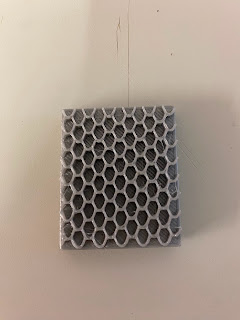Conflict and Remembrance
Conflict and Remembrance
Throughout history, in all parts of the world, people have struggled with loss and how to cope with it. Do we commemorate them, or try to forget and move on? Many artists have created works to preserve the memory of people they have lost personally, or a large group lost to war or another huge event.
Vietnam Veterans Memorial, Maya Lin
This memorial is situated in Washington D.C. and it honours service members of the US armed forces who served in the Vietnam War. It is situated on a two acre site on two black granite walls engraved with the names of service members who died or who remain missing as a result of their service in Vietnam and South East Asia during the war. At the highest point, it is 3.1 metres tall, and tapers off on each side to a height of 20cm.The names are listed in chronological order, starting at the apex on panel 1E on 8th of July 1959, moving day by day to the end of the eastern wall at panel 70E with ended on 25th of May 1968. They start again at panel 70W at the end of the western wall, completing the list for 25th of May 1968, and returning to the apex at panel 1W in 1975. There were a total of eight female names included in the memorial, all of which were nurses.
A piece like this can be very hard to do without inadvertently offending people, as it can be very easy to miss out a name, or add a name that 'shouldn't be there'. With 58,220 casualties, it wouldn't be hard to miss out, or even misspell a name, which would be very hard for the families or survivors to accept. This is one reason I find this work so impressive, not only has Lin managed to find everyone that died, or went missing, she made a 'routing' to follow if new information arises. This includes: those who are confirmed as dead are denoted by a diamond next to the name and those who's status in unknown is denoted with a cross. When the death of one who was previously missing is confirmed, a diamond is superimposed over the cross. If a missing person is later found alive, which has not yet occurred, the the cross is to be circumscribed by a circle. This make sure everyone is correctly represented by the memorial, with space for alterations if needed, including several blank panels, which are being stored at Quantico Marine Base, for use if any panels were to be damaged.
Miss you too mate, Dave H
Dave, a British Army veteran, creates pieces inspired by his own personal experiences and events involving his comrades, or by request from the public. He makes his pieces in memory of those who have served or fallen in modern day conflicts, or historical military events.This piece depicts a dog at the battlefield cross marker of its fallen handler. He uses dark and muted tones for the sky and ground, black for the dog and cross, with the silhouette of the fallen soldier in white. I like his use of colour here, as it clearly shows the divide between life and death, but in the opposite way we would usually see this. Everything that is alive or 'real' is dark, but the solider is a translucent white, suggesting he is a ghost or even an angel. Then the vibrant crimson of the poppy stands out, which ties into the rest of his paintings.
Poppies are used as the symbol of remembrance because they grew in abundance on the battlefields after World War 1 ended. This event was described in the famous WW1 poem, Flanders Fields, and since then, poppies have become a symbol of remembering not only those who gave their lives in WW1, but of all those who have died on behalf of their country.






Comments
Post a Comment